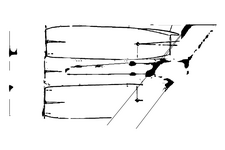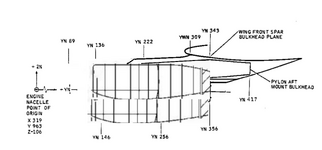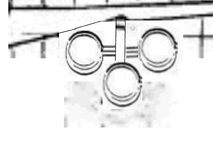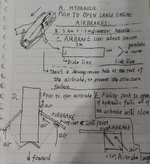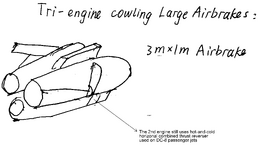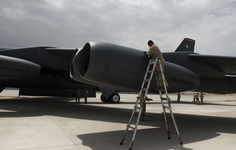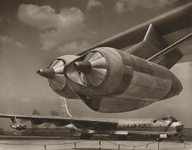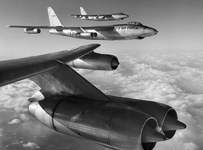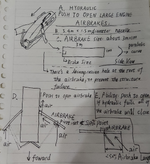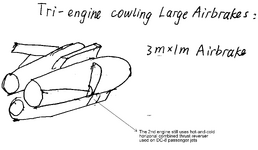m13katyusa2020
Senior Airman
- 472
- Mar 26, 2022
GE CF6 was a type of engine developed from TF39 used on C-5 in 1960s, which generally produces a power from 200kN to 300kN, weighing about 4 tons. It's used on Airbus A300, A330. Boeing 747, Boeing 767 and Douglas DC-10.
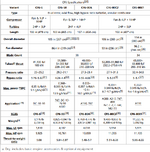
GE 1960s CF6 engine early viarant maintenance manual+IPC are here:
CF6 engine maintenance manual refer to retired A310 maintenance manual ATA-72 thanks to Scoutdominator50:
 ww2aircraft.net
OR: A310's CF6 engine maintenance manual here or this one uploaded 2 months ago, this way:
ww2aircraft.net
OR: A310's CF6 engine maintenance manual here or this one uploaded 2 months ago, this way:
CF6 engine IPC refer to retired DC-10 IPC ATA-72:
 ww2aircraft.net
ww2aircraft.net
OR: DC-10's CF6 engine IPC ATA-72 here or this one uploaded 1 months ago, this way:
GE CF6 engine early viarant student maintenance training manuals sorted out from public websites.
Disclaimer: These items are shared for reference, sharing for non-profitable use only.
This manuals and blueprints are not meant to be used for current update material for certification / repair, but make an excellent reference for the scholar, collector, modeler or aircraft buffs .... For proprietary reasons we generally only provide civil manuals and blueprints on long-out-of-production Aircraft / Engines / Helicopter. The information is for reference only and we do not guarantee the accuracy or currency of any manuals.
Reference herein to any specific commercial products by trade name, trademark, manufacturer, or otherwise, is not meant to imply or suggest any endorsement by, or affiliation with that manufacturer or supplier. All trade names, trademarks and manufacturer names are the property of their respective owners.
Public advertisement on CF6-based LM 2500 introduction advertisement in this folder:
 u.pcloud.link
u.pcloud.link
alternate link with access code 1234
LM2500 advertisement spec:
 u.pcloud.link
u.pcloud.link
 u.pcloud.link
u.pcloud.link
GE basic theory on turbine popular science booklets:
 u.pcloud.link
u.pcloud.link
 u.pcloud.link
u.pcloud.link
 u.pcloud.link
u.pcloud.link
The following 10 pdf attachments are for maintenance training manuals, basic line maintenance training manual, borescope manual, component location manual, and type certificate datasheet on public websites, including type certificate FAA published on its public site:

GE 1960s CF6 engine early viarant maintenance manual+IPC are here:
CF6 engine maintenance manual refer to retired A310 maintenance manual ATA-72 thanks to Scoutdominator50:
Retired DC-10 POH, SRM, NDT, Maintenance Fam manual, IPC, MD11 EAMM schemics, Retired Airbus A310 AMM, Retired Lockheed L1011 AMM, twin DC10 concept
DC-10-10 was a 1970s heavy jet, originally a medium-ranged jet, whose payload and range was approximately the same with Illyushin IL-76, but could carry 2-times more passengers than IL-76, and its machanical gauges are becoming out of date. DC-10 Airplane Characteristics[112] Variant -10 -30...
CF6 engine IPC refer to retired DC-10 IPC ATA-72:
Retired DC-10 POH, SRM, NDT, Maintenance Fam manual, IPC, MD11 EAMM schemics, Retired Airbus A310 AMM, Retired Lockheed L1011 AMM, twin DC10 concept
DC-10-10 was a 1970s heavy jet, originally a medium-ranged jet, whose payload and range was approximately the same with Illyushin IL-76, but could carry 2-times more passengers than IL-76, and its machanical gauges are becoming out of date. DC-10 Airplane Characteristics[112] Variant -10 -30...
OR: DC-10's CF6 engine IPC ATA-72 here or this one uploaded 1 months ago, this way:
GE CF6 engine early viarant student maintenance training manuals sorted out from public websites.
Disclaimer: These items are shared for reference, sharing for non-profitable use only.
This manuals and blueprints are not meant to be used for current update material for certification / repair, but make an excellent reference for the scholar, collector, modeler or aircraft buffs .... For proprietary reasons we generally only provide civil manuals and blueprints on long-out-of-production Aircraft / Engines / Helicopter. The information is for reference only and we do not guarantee the accuracy or currency of any manuals.
Reference herein to any specific commercial products by trade name, trademark, manufacturer, or otherwise, is not meant to imply or suggest any endorsement by, or affiliation with that manufacturer or supplier. All trade names, trademarks and manufacturer names are the property of their respective owners.
Public advertisement on CF6-based LM 2500 introduction advertisement in this folder:
LM2500publicintroadvertisement - Shared with pCloud
Keep all your files safe, access them on any device you own and share with just the right people. Create a free pCloud account!
alternate link with access code 1234
LM2500 advertisement spec:
TM2500GEN8TM2500GEN8PRODUCTSPEC.pdf - Shared with pCloud
Keep, share and access your files whenever you need from wherever you are. Create a free pCloud account and make your life easier.
TM2500-and-TM2500-Intro-Pages.pdf - Shared with pCloud
Keep, share and access your files whenever you need from wherever you are. Create a free pCloud account and make your life easier.
GE basic theory on turbine popular science booklets:
GE-Gas-Turbine-Training-Manual.pdf - Shared with pCloud
Keep, share and access your files whenever you need from wherever you are. Create a free pCloud account and make your life easier.
ger-4212-ge-generator-rotor-design-operational-issues-refurb-options.pdf - Shared with pCloud
Keep, share and access your files whenever you need from wherever you are. Create a free pCloud account and make your life easier.
get6497a.pdf - Shared with pCloud
Keep, share and access your files whenever you need from wherever you are. Create a free pCloud account and make your life easier.
The following 10 pdf attachments are for maintenance training manuals, basic line maintenance training manual, borescope manual, component location manual, and type certificate datasheet on public websites, including type certificate FAA published on its public site:
Attachments
-
training-manual-ata-71-80-cf6-80-c2.pdf26.9 MB · Views: 339
-
datasheet-CF6-80E1.pdf310.1 KB · Views: 212
-
datasheet-CF6-80C2.pdf303.7 KB · Views: 190
-
E23EA.pdf138.7 KB · Views: 200
-
E13NETCDS.pdf1.8 MB · Views: 189
-
cf6-80e1-components-location.pdf2.5 MB · Views: 240
-
DC10-engine-cf6-50-c2-fam-manual.pdf30.6 MB · Views: 284
-
Cf6-maintenance-training-ata70-80-december-2011.pdf20.6 MB · Views: 290
-
cf6-80e1-borescope-manual.pdf13 MB · Views: 223
-
ge-cf6-80-c2-Line-basic-maintenance-training-manual.pdf34.7 MB · Views: 267
Last edited:

